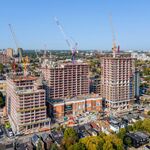RichA
Banned
You would't believe the cost of maintaining those "antique" vehicles
A fellow I know was contracted to replicate parts which haven't been made in decades for subway cars, etc. He was able to build his own foundry and machine shop, solely on the value of the contract and he makes terrific profits.
Beauty is all in the eye of the beholder. There are plenty of surface and elevated systems out there which I think look very sharp. This includes those done in a pre-modern 19th century era and style.
A fellow I know was contracted to replicate parts which haven't been made in decades for subway cars, etc. He was able to build his own foundry and machine shop, solely on the value of the contract and he makes terrific profits.






